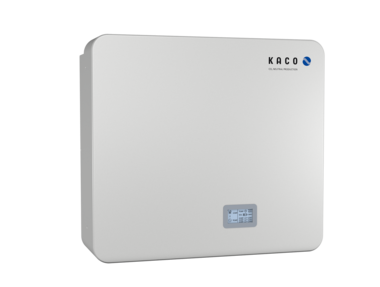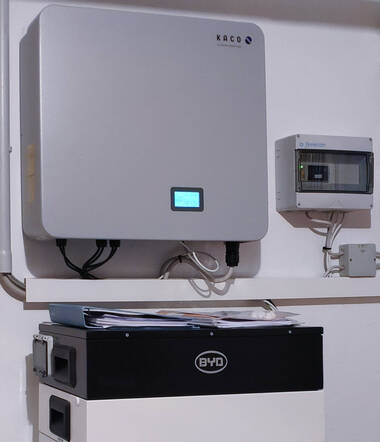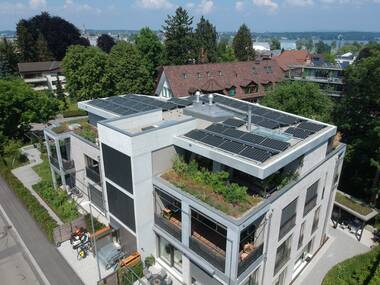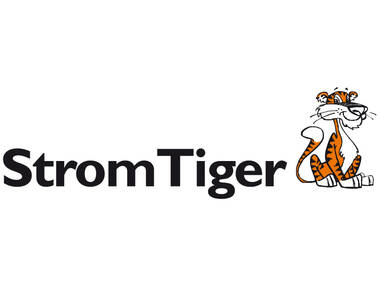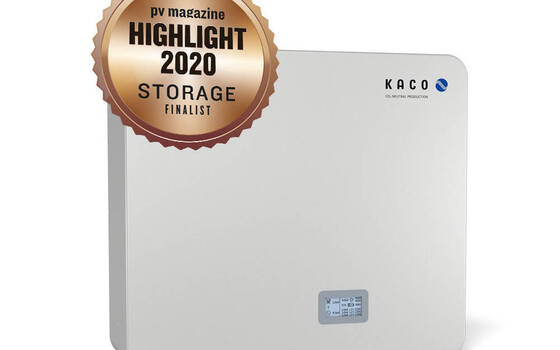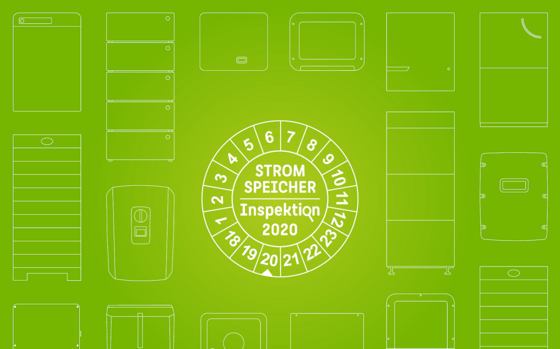Further information about the blueplanet hybrid 10.0 TL3
Interview: Successful energy storage system
Hybrid inverter from KACO new energy plus 10 kW battery tested by HTW Berlin
April 14, 2020
Private households were the drivers of the first major "storage wave" in Germany; in 2019, industrial and commercial storage followed suit, and the storage market grew by another 10 %. Now the next step is about to be taken: to extend electrification to mobility and heat – the well-known sector coupling.
In the course of this, operators of smaller plants – residential as well as commercial – not only need a certain amount of electricity, but also quick access to higher capacities. The right setting for the blueplanet hybrid 10.0 TL3 from KACO new energy: The hybrid inverter, together with a high-voltage battery from BYD, performed well in the Energy Storage Inspection 2020 of the Berlin University of Applied Sciences (HTW Berlin).
We take this as an opportunity to talk to Matthias Eschbach, Managing Director of StromTiger GmbH: Why does he recommend energy storage systems with the compact hybrid inverter to his customers? Peter Winter, Key Account Manager at KACO new energy, provides insights into the considerations during the development phase.
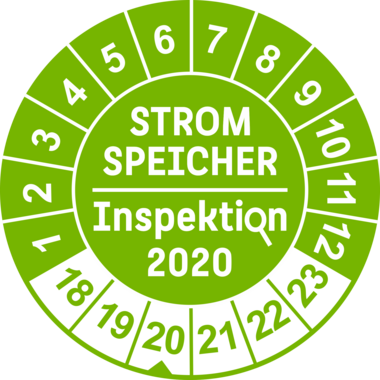
Mr. Eschbach, your StromTiger GmbH regularly installs energy storage systems for residential homes. What are your experiences with the blueplanet hybrid 10.0 TL3?
Matthias Eschbach: It is important to me to offer my customers flexibility and future security. The blueplanet hybrid 10.0 TL3 offers solutions for several module orientations within a single PV plant, adjustment of string lengths and different storage sizes. As a hybrid inverter, the device from KACO new energy also works very well in a pure PV installation. The expansion to an energy storage system can then be completed in a second step without any problems. Everything is possible!
What does the on-site installation look like?
Matthias Eschbach: The individual components – inverter, power switch and battery – are compact and can be installed almost anywhere in the house. There are only plug connections on the inverter and communication uses normal LAN cables. Installation and commissioning are therefore a snap. Laying the cable ducts is probably the most time-consuming part of it all. The best thing is, if things really get tight, the components can be placed up to 20 metres apart. This means that the storage system really does fit into every house.
Peter Winter: When we developed the blueplanet hybrid 10.0 TL3, we gave a lot of thought to where it would be used. The comparison of the HTW Berlin shows that it is the only inverter with its own measuring and switching unit that can be placed directly next to the house connection. The supply line is then simply routed via this so-called blueplanet hy-switch. It is no larger than a shoebox and can therefore be installed in a very space-saving manner. In addition, there is a feature that is highly appreciated by our customers: Silence. The purely passive cooling of the inverter avoids the use of a fan. This means no maintenance and no noise.
A widespread desire is the one for independence. Is it possible to live energy self-sufficiently with the blueplanet hybrid battery storage system?
Peter Winter: The largest global market for residential storage is Germany. Here, self-sufficiency has two sides. On the one hand, customers want to draw as little electricity as possible from the public grid; on the other hand, the surplus should be fed into the public grid for which they are remunerated. The consequence is to keep as much energy as possible in the system. We achieve this with three measures: High conversion efficiency, full 10 kilowatts of power and the best control speed of only 0.3 seconds.
Matthias Eschbach: For our customers, this means that most households only need one to two kWh of electricity from outside of their system in the summer, which means they are truly energy self-sufficient. To give customers a picture, I always point to the electricity meter during an on-site appointment and say: "We’re gonna stop that one!“
But what happens if the public power supply fails?
Peter Winter: Then we are fully prepared. The inverter is designed for real off-grid applications. In the event of a power failure, the domestic grid separates from the public grid and an island grid is set up. We also offer three-phase current with a full 10 kilowatt capacity for this purpose. In addition, black start capability and solar battery charging are important features that are standard with us. The software required for this will be available to our customers before the end of this quarter. The pilot plants have been operating successfully in island mode for over a year.
How does this apply to larger plants?
Matthias Eschbach: What I like about the KACO solution is that although it offers the advantages of DC coupling, it also appeals to high-performance installations thanks to its own power switch. This is of particular interest in the commercial sector. I can balance all consumers with the full power of the storage system without having to significantly change the installation. The external current sensors can measure up to 100 amperes.
Peter Winter: That's right, most installations don't require the installation of a separate emergency power distribution system. The HTW Berlin's ranking also shows that we are one of only two DC-coupled systems where AC charging of the battery is possible. This is good news for our system integrators, such as Fenecon, who will thus also be able to develop solutions for customers in whose tariff area time-based "metering and billing" applies. We also demonstrate our commitment to flexible and open solutions through our involvement in the OpenEMS Association.
Which batteries can be connected to the blueplanet hybrid?
Matthias Eschbach: So far we have used two different batteries with the inverter. In addition to the Domus batteries from Energy Depot, many of our customers ask for the batteries from BYD. Here it is important to me that only high-voltage batteries are used. These simply bring the best efficiency, as the comparison of the HTW Berlin shows.
Peter Winter: We have quite consciously decided to orientate our system towards high-voltage batteries, preferably with lithium iron phosphate cells. The higher voltage allows the highest possible efficiency and small cable cross sections. The cells are extremely robust and have a long service life; this is also reflected in the manufacturers' warranty conditions. In addition, iron phosphate replaces cobalt, which is used in other storage applications: This means we can dispense with a raw material that is often obtained under very questionable circumstances. On top of that, these batteries function with high efficiency over a wide temperature range. In order to offer our customers a good selection of compatible batteries, we provide battery manufacturers with our communication protocol on request.
The word "temperature" brings us to a very important aspect for systems used in homes – safety.
Matthias Eschbach: Indeed, I’m often being asked about this. I can then refer to the higher thermal stability of the lithium iron phosphate battery. The critical temperature here is so high that it is unlikely the cells will be affected by thermal runaways. The batteries are intrinsically safe, are certified and have their own battery management system that permanently monitors numerous parameters – including temperature. The blueplanet hybrid 10.0 TL3 even goes a step further: It also continuously monitors the battery voltage. If there are any discrepancies, it disconnects the battery immediately. Better safe than sorry!
Do you have any recommendations on how to dimension the system?
Peter Winter: The HTW Berlin confirms that our inverter has one of the best efficiencies over all the operating conditions. This also applies to the partial load range – both on the PV side and the battery side. In this respect, the PV system can be designed flexibly. Thanks to the two MPP trackers, an east-west alignment is also possible without any problems. As far as the battery is concerned, you should know the household consumption and think about large consumers such as electric vehicles or heat pumps. Both components are included in the energy storage inspection. A very good reference point for the design is provided by the independence calculator of the HTW Berlin. There you can determine the optimal system design for yourself.
Matthias Eschbach: …and then use a conversation with your installer for expert advice!
Why don't you give us an outlook on how the topic of energy storage will continue at KACO new energy.
Peter Winter: First of all, we are keen to receive all the necessary certificates for the grid connection of the blueplanet hybrid 10.0 TL3 in Austria, probably by mid-year. We are receiving a lot of interest from our neighbours there. And for afterwards I can look forward to further new products in the storage segment. There’s still a lot to come!


